
views
Organizing Your Mission

Have a goal. This is called an “objective.” It’s easy to get lost in the huge amount of information you’re about to uncover. Make sure you’re trying to figure out a clear question like “Where did my sister hide my stuffed animal?” “Is my boyfriend cheating on me?” or “Why is my friend always in a hurry after gym class?”

Get to know your surroundings. The more familiar with the area you will be spying at, the more it can help you. Knowing where you will be spying will make you more comfortable when it comes time to spy. The bigger the location where you’ll be spying, the bigger the possibility that you may lose track of your target.Try to spy where there aren't many places you can lose your target. It could take more time to scout larger locations like malls, so stick with small locations. If you’re spying on someone you know, you may already know a lot about where the person lives or hangs out. Notice exits, entrances, and hallways just in case of an emergency. Figure out things you can hide behind, like large trash cans, houses, or cars.
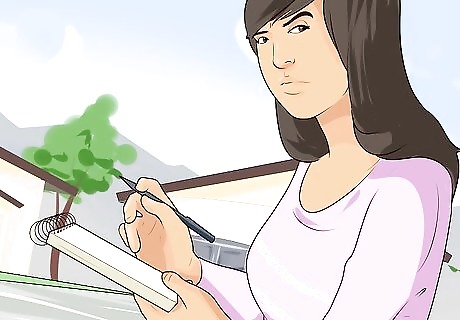
Keep a journal. Write down your goal and whatever you already know about your target. Include where you’ll be spying and your observations about the location. Write down what you think the outcome of spying will be; when your mission is complete, you can see if you were right. Write down dates and times of events, too. The more organized you are, the easier it is to draw conclusions.
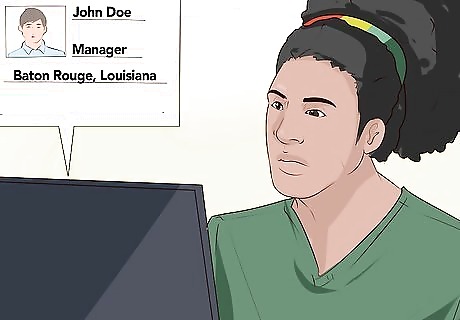
Know your target. Figure out what the person’s schedule is and where the target will be at certain times. This will help you figure out where and when to complete your mission. Find out the target’s name, occupation, and what area the person lives in. Be sure you know what the target looks like. This will make following someone from a distance easier. If you’re spying on someone you already know, find out even more personal details.
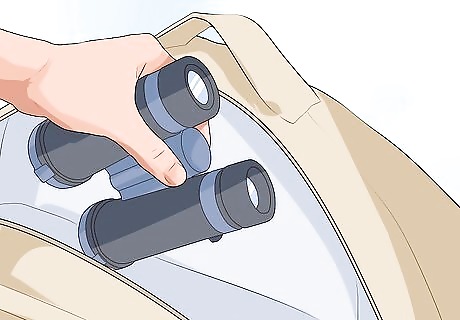
Gather your tools. There are endless spy gadgets on the market: a simple Google search reveals thousands! Making yourself a budget before you start looking at gadgets will mean you don’t bankrupt yourself to spy. Only get what’s useful. For example, if you’re going to be far away from the target, binoculars could help. If you need to talk to someone on the phone, consider a voice changer. Expensive gear usually isn’t necessary. Simpler is better. Tons of gear can get confusing, and carrying around a bunch of gadgets looks suspicious.
Dressing Like a Spy

Dress normally. Usually, people like to stand out by wearing clothes that are unique. When you’re spying, however, the trick is to blend in so no one notices you. A bad spy hides; a good spy blends.

Dress for the occasion. If you’ll be spying at the beach, don’t show up wearing cameo pants and boots. Dress the way everyone else would. If the people around you are wearing a suit and tie, you do the same.

Wear neutral colors. This includes grays, blacks, and browns. Stay away from wearing distracting colors like red, orange, and yellow.

Act calm. Keep a relaxed posture and don’t fidget too much when you’re spying. Touching your face a lot, rubbing your legs in an anxious way, or even avoiding eye contact are all examples of nervous body language.

Use accessories. If you are spying on someone you know personally, that means your cover can be easily blown. There are many affordable and simple ways to change the way you look. Fake facial hair and wigs can be found at any joke shop or even in discount stores. These may look suspicious, however, if you aren’t old enough to grow facial hair, so try them on beforehand. Sunglasses are an easy way to hide your face. Hats hide also your face. If you have long hair, try hiding your hair in the hat, too. Wigs are another good option. If you talk to someone, use a fake accent, but make sure that it actually sounds similar to the real one; some fake accents sound completely fake and could get your cover blown.
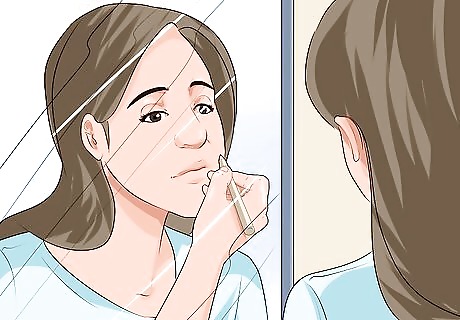
Age yourself. We all have lines that form when we smile, and you can make these lines more permanent by using an eyebrow pencil to fill in the lines. Use a soft eyebrow pencil that is darker than your skin tone. Follow your laugh and smile lines gently with the pencil, then smooth the lines out with your finger. Do the same with the lines that run from your nostrils to the corners of your mouth, and add some wrinkles on your forehead. Don’t make the lines too dark.

Gain weight. Adding a cushion under your clothes will give you a bigger belly. A towel rolled up under your jacket will make to look broader. No one is likely to recognize you if your body looks completely different.

Change your walk. We can all recognize people we know from far away by their movements. If you know your target, changing the way you walk will prevent your target from recognizing you at a distance.
Gathering Information
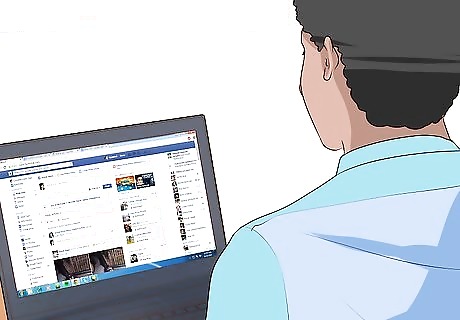
Use the internet. Scour the target’s social media accounts, like Facebook, Twitter, and Instagram. Often, people make personal posts on these sites that will allow you to learn a lot of information. Making a fake social media account to follow or friend the target can be a good idea. Take your time. Since people often make more than one post a day, going through someone’s social media accounts can be time consuming. Write down any posts that are relevant to your objective.
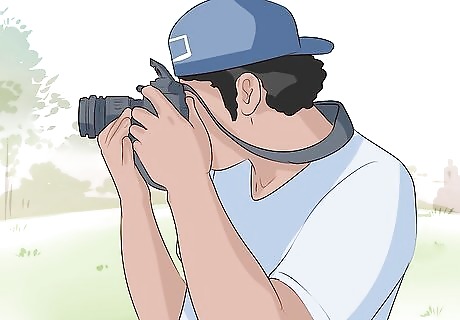
Take pictures. Camera lenses can zoom in on a subject, so you can take pictures from far away. This can help you more easily remember what you observed while following someone. Be sneaky because someone can easily see you taking a picture.

Interview the target’s friends. This can be difficult, and it may get your cover blown, so be casual. If you have a question you need answered, people who are good friends with the target could have important clues. Don’t try this unless you really believe the target’s friends could have clues that help your objective. Never ask the target’s friends directly about your mission. Bring your question up in a natural way. The closer you already are to the target’s friends, the easier this will be. Trying to interview a stranger isn’t a good idea, and it could be dangerous.
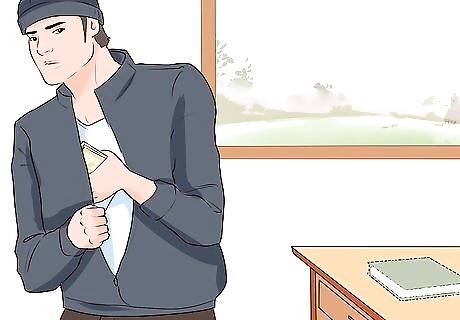
Take what you need. If there is an item you need to obtain in order to gain information, take it, but leave as little a trace as possible. If you see that the target leaves the room or office, slip in casually and shut the door behind before taking anything. Make sure no one sees you do take anything. Be sure not to move anything around. Leave everything as it was when you stepped in. Make a mental note of what it looked like before you touch anything. Remember that stealing is illegal. If you need to get an item from someone, put it back once you look at it.

Observe the target closely. Keep your objective in mind the entire time you’re spying. A clue is anything that could answer your objective. Try to read lips and understand conversation without hearing it being spoken. Have more than one back up plan, just in case you need to leave a situation with short notice. Don’t wear yourself out. If you’ve been spying for hours, take a break. The more tired you are, the less observant you will be.



















Comments
0 comment